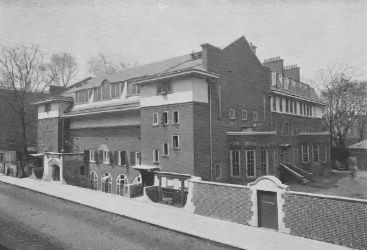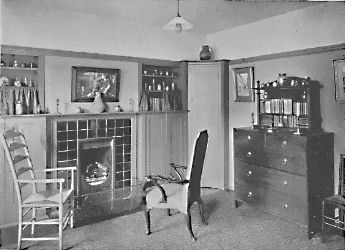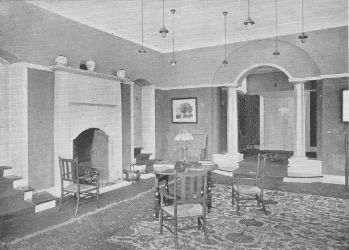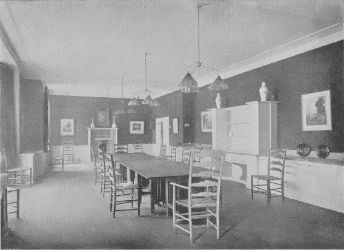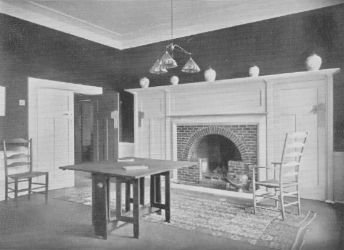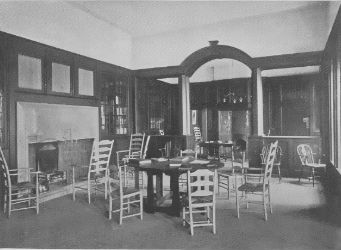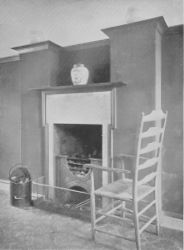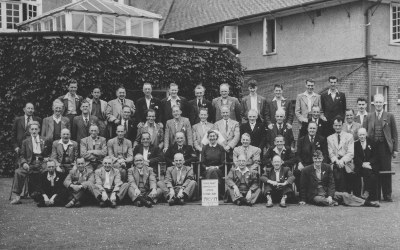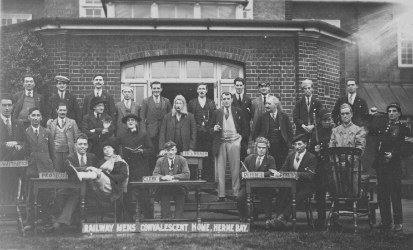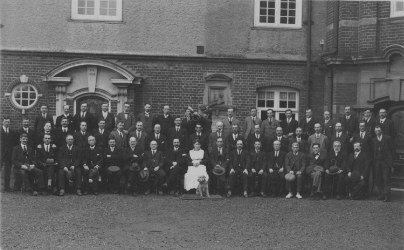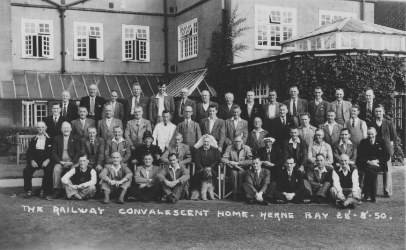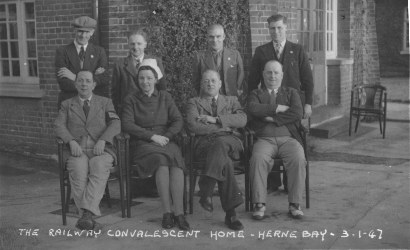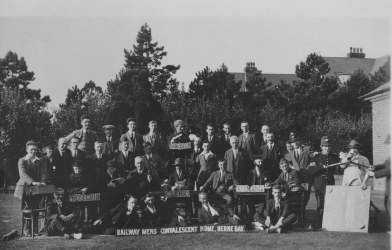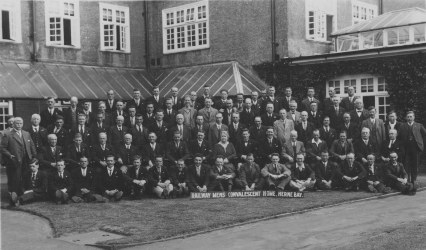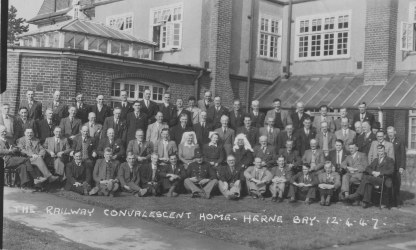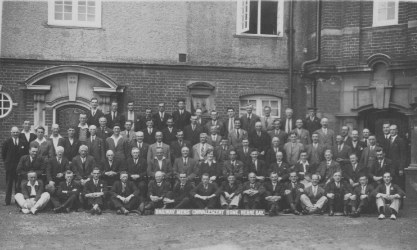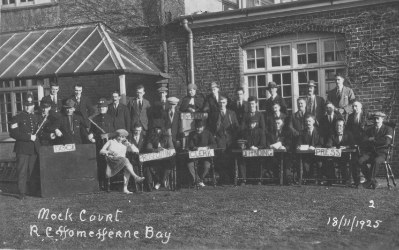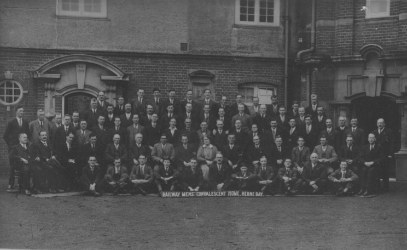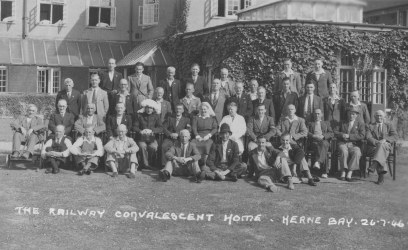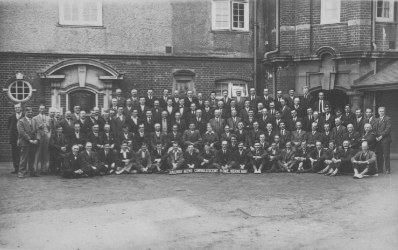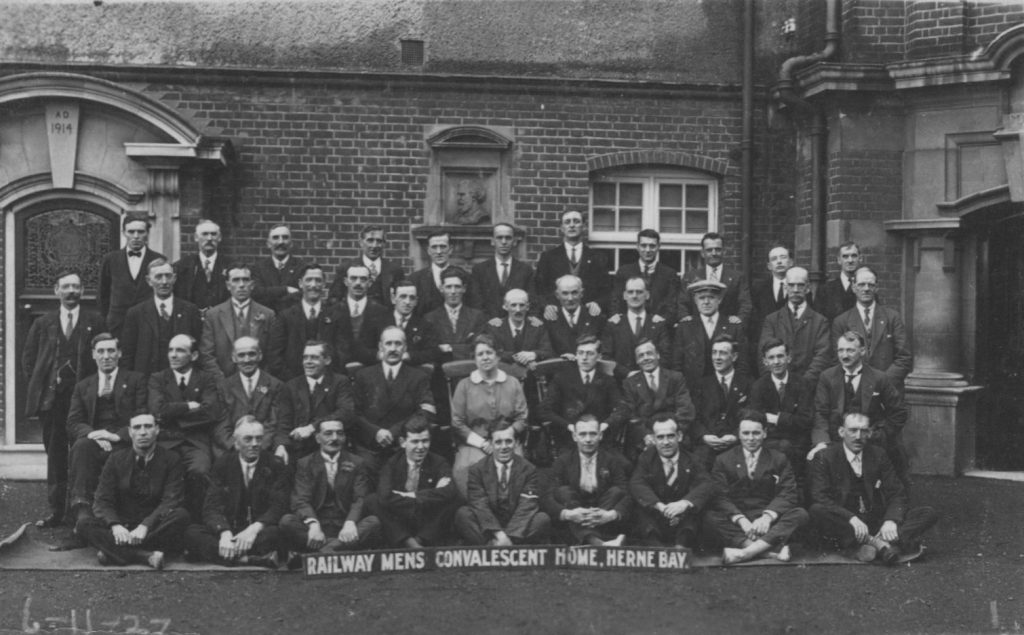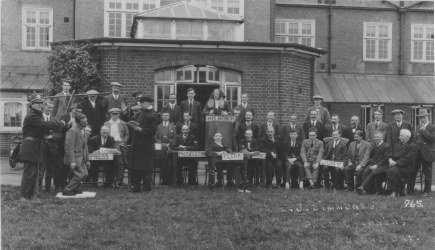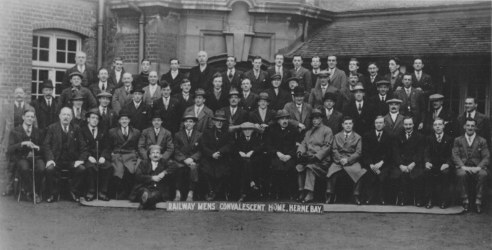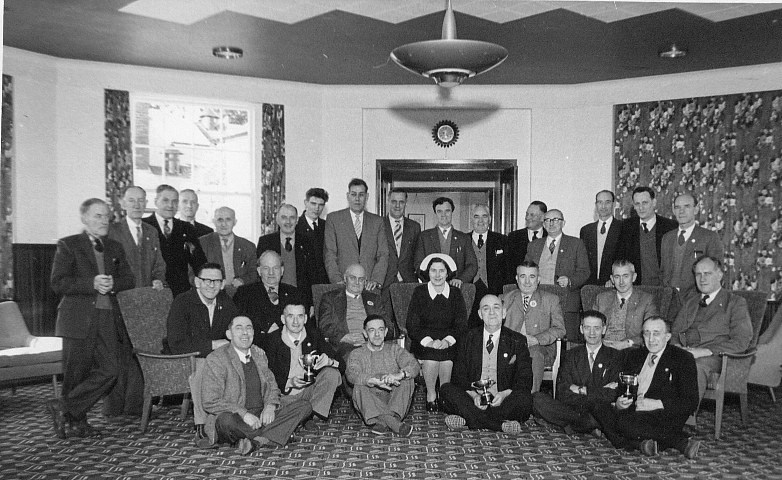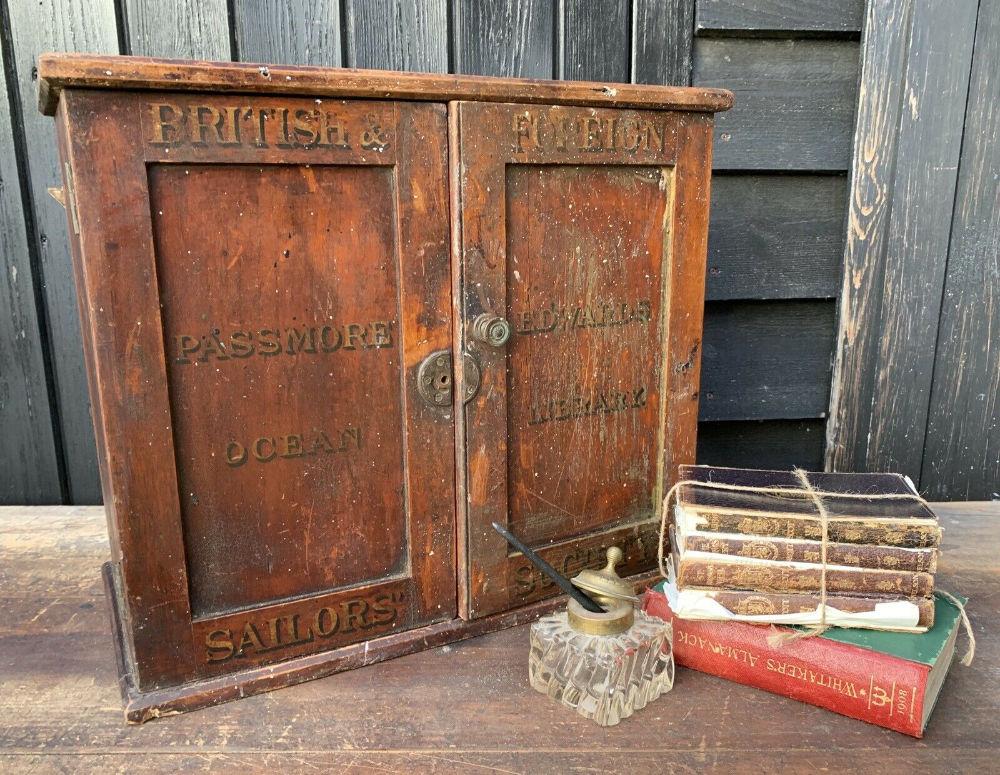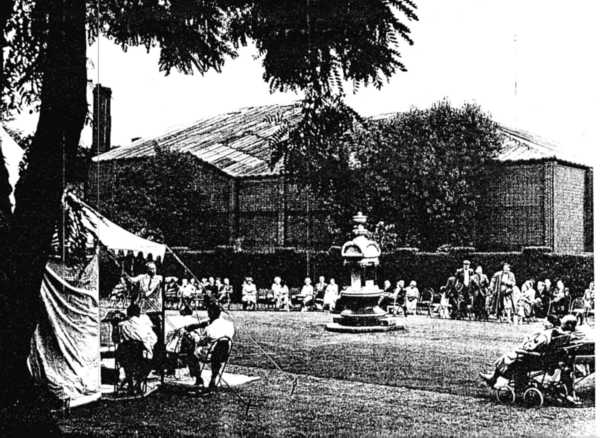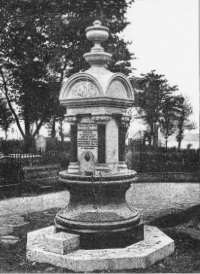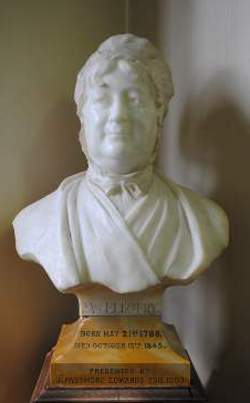The Schoolmaster: 30 September 1899.
All roads led to Sydenham on Saturday. From welsh mountain and Devonshire valley, from Yorkshire moor and Northumbrian borderland came the happy pilgrims to take part in the rejoicings at the completion and opening of the Passmore Edwards House for the orphans of teachers, to congratulate the London brethren on the magnificent work they have accomplished through the Special Effort Fund, and to thank Mr Passmore Edwards and Mr Whittick Rabbits for their splendid munificence. It was indeed a day of triumph, and the faces of the great gathering showed more than the mere applause how much the day meant to the profession. Outside the Conference themselves it would task the memory of our eldest members to recall such a representative and influential massing of the forces of the Union, With nearly
Twelve Hundred Present,
Most of whom are known throughout the kingdom, it would be easier top say who were not present than to mention those that were. London was naturally well represented. West ham sent a worthy contingent of well-known workers, and the other extra-metropolitan associations showed their sympathy by the presence of many of their local leaders.
Although the opening ceremony was fixed for three o’clock, the House was well filled before two, and the early arrivals took the opportunity of going the rounds before the crowd made circulation difficult. Westwood House, or Passmore Edwards House, as it will henceforth be called, was it may well be remembered, built from the designs of the late J. L. Pearson, R.A. some twenty years since, by Mr A. Littleton, of the firm of Novello & Co, as a palace for the entertainment of his musical friends. Five acres of beautiful grounds, gardens, paddocks, and lawns surround the House, which is reached by a magnificent avenue a hundred yards long. The great feature of the house is the magnificent music salon fitted in richly carved woods with a minstrel’s gallery at one end. It is said that the fireplace alone cost £1,000, and no expense has been spared to make the mansion a residence worthy of the kings of art. The doors are of elaborately carved mahogany, and the principle staircase is ornamented by sculptured figures on the newels. The winter gardens have domed roofs, and the garden terraces are amongst the happiest features of the design. Since coming into the hands of the Orphanage Council, a few alterations have been made to suit the new arrangements; but the thoughtful care of the members has allowed of this being done without interfering with the harmony of the
Beautiful Work of Art
which the House really is. The coach houses have been utilised as workshops and gymnasium, and the necessary sanitary arrangements have been made without breaking in any way the line of the building.
A tablet bearing the words:-The Passmore Edwards House for the Orphans of Teachers,” has been placed over the north front, and a brass plate with the following inscription is to be put up in the hall:-
PASSMORE EDWARDS HOUSE FOR THE ORPHANS OF TEACHERS,
To the Glory of God, and the Succour of the Fatherless, this House is dedicated,
This House and Grounds were opened as a Teachers Orphanage on September 23rd 1899,
By
J Passmore Edwards, Esq.,
With his noble benefaction and the proceeds of a Special Effort made by the Metropolitan Branches of the National Union of Teachers.
The Council of Teacher’s Benevolent and Orphan Funds were enabled to purchase the Freehold from the generous vendor,
C J Whittick Rabbits, Esq., JP.
OFFICERS:
Of the Council” Of the Special Effort:
Mr James Hodge, Chairman Mrs E M Burgwin, Chairman
Mr Fred W Hearn, Treasurer Earl Jersy, Jnt Teasurer
Mr J H Yoxall, Secretary Mr S Creswell, Jnt Treasurer
Mr W W F Osborne, Secretary
On Saturday the arrangements were in the hands of a special committee, and Mr Hardy with a band of devoted stewards made things easy and pleasant for the visitors. Indoors Mrs Burgwin, the “mother of the orphans,” received her guests, noble and simple, with the charming tact, which has so often, stood the Union’s Charities in good stead. Miss Ansell and Miss carter were in the forefront in showing visitors round, and we trust that few teachers will pass through the metropolis without sparing a few hours to view their latest acquisition. The dormitories are beautifully light, with an outlook that it would be hard to better, and the genial surroundings do much to take away the sad thoughts which those little beds, with their pathetic associations, call up. The day room is bright and cheerful, and it is to be hoped that before long the walls will be hung with pictures worthy of the building. Here is a chance for the many art lovers amongst our readers; for although the splendid decorations of the House prevent any suggestion of coldness, it cannot be doubted that the addition of some good pictures would help to cheer up our little guests who have now taken up their abode there.
With military punctuality the band of HM Scots Guards, under the baton of Mr Henry T Dunberton, opened the proceedings with a cheerful marching tune, and the platform erected at the South Front was speedily filled with the invited quests. Amongst them were:-
Sir George Kekeich, Mr Passmore Edwards, Mrs Passmore Edwards, and Mr Harry Passmore Edwards, Sir Charles Elliott, and Lady Jersey; Mr C Bowden, the Rev F Storer Clark, Mr T Gautrey, Mr A J Mundella, Mr J Sinclair, and Mr Warmington, members of the London School Board; Dr Garnett, Secretary of the Technical Education Board of the London County Council; Dr Heller; Mr T Clancy, President of the N.U.T.; Mr Marshall Jackman, Vice President , and Miss Jackman; Mr C James, Assistant Secretary, and Mrs James; Mr A Golding, Secretary of the Funds; Mr A A Thomas, BA, Secretary of the Examinations Board; Mr C J Whittick Rabbits, the generous vendor of the House, and Miss Rabbits; Mr J Hodge, Chairman of the Council, and Mrs Hodge; Mr P Baxendale, Vice Chairman of the Council, and Mrs Baxendale; Mr F W Hearn, Treasurer of the Funds, ( and many more listed by name).
A number of telegrams from those unable to attend were also read out)
THE OPENING CEREMONY
The skies look rather threatening as the company rises to sing the opening hymn-“O God our help in Ages past”- but the rain considerably holds off for the first part of the ceremony. Mrs Burgwin is in the chair, looking radiant at the success of her effort. She is supported by the Vicar of Sydenham, Mr James Hodge, lady Jersey, Sir George Kekewich, Mr Clancy, Mr Baxendale, and other well known friends.
The hymn is sung with marvellous effect, the orphans at the foot of the platform taking no small part, and then the vicar of Sydenham offers up a short prayer for the present and future dwellers in the home. The Lords Prayer follows, and the chairman arises amid loud applause to give a short history of the movement. She points out the difficulties that had to be contended with in obtaining a suitable site. Time after time the sites Committee had been disappointed; but at length, through the generosity of Mr Passmore Edwards and their good friend Mr Rabbits, they had succeeded. They all knew now how Mr Richard Greenwood announced that Mr Passmore Edwards was prepared to give £6000 for the building if a site could be obtained, and how Mr Rabbits had generously let them have the beautiful building and grounds for the low price of £10,000. The London teachers had done splendidly, and she believed they would not rest until the full £10,000 was obtained. Continuing, Mrs Burgwin called forth hearty cheers by saying that there should be two portraits hanging in the hall. One of Passmore Edwards and one of Mr Rabbits. The names of these two gentlemen would, she said be handed down as happy memorials of unselfish kindness to the children to whom that house would be a source of refinement and progress, and the portraits wou’d serve as a reminder of their discerning liberality.
The House Beautiful
Would lend dignity to the whole body of teachers, and confer exceeding pleasure in possession. It would stimulate the imagination of the boys and be a source of inspiration to them in future life. “Who,” she asked, “could live here without having manners mellowed and every rude and brutal passion softened? No boy will be ashamed to own that he was brought up and educated in this house, but each one will look back with glowing pride and heartfelt joy at this place and its advantages. Moreover, these surroundings will stimulate the teachers and boys to take up literary and humane studies, and thus counteract that scientific materialism which Mr Bryce has so eloquently denounced. Not from this place can go forth the hard, dry, gritty and infertile mind. Here poetry, painting, music, architecture, and that Christian religion which has kindled these arts into a fierce flame in the bosoms of their possessors are everywhere present, teaching the lessons of enthusiasm, stirring the soul to valiant deeds, to brave danger and pain, and to go to labours cheerfully until life’s end”. An enthusiastic burst of cheering breaks in upon this eloquent expression of hope. When it subsides Mrs Burgwin goes on to show the advantages of the situation-sufficiently in the country to enable the boys to watch the progress of the trees and flowers from season to season, and near enough to the greatest city in the world to keep them in touch with the art and science of the world. Near to was the magnificent foundation of the College of God’s gift, the Dulwich gallery, the Horniman Museum and the Crystal palace. She was convinced that the presence of the orphanage in the midst of so many wealthy and splendid mansions would be no detriment to the neighbourhood, but on the contrary, would be welcomed with that
Cordiality, Benevolence and Hospitality
so essential to social communities. “This house” she continues will, we believe, inspire prayer, counsel, forgiveness, stifle self, and be a seminary of progress, sending forth heroes, inventors, men of practical science, student, and teachers of the highest patriotism and godly fear. And so thinking, fellow teachers I am joyful, and in our joy and in our gratitude we echo the words opf St Peter with all reverence, “Master, it is good for us to be here”. The vast audience were held spell bound by the speaker’s splendid peroration, and the cheering was long and general as she turned, with a few words, to present the key of the house to Mr Passmore Edwards as a memorial of the occasion. “Take this key as a memorial of this day. You will see that it is engraved with the motto of your life- Charity. Old and young in the years to come will rise up and call you blessed”.
Mr Passmore Edwards, who was received with three hearty cheers, said that it gave him the greatest possible pleasure to be present, but as he had to speak later on he would only at this stage express his thanks for their kindness. Renewed cheering burst forth and then three cheers more. When silence returns, Madame Antoinette Sterling rises to sing “O Rest in the Lord” with a feeling and emphasis that lend additional effect to the magnificent voice of the singer.
Mr James Hodge (Chairman of the Council) now steps forward to receive the keys of the house. In a few telling sentences Mrs Burgwin charges him to guard it “for ever”, as the trustee of the teachers of the country.
Mr Hodge, who was loudly cheered, said that, although he could not guard it “for ever” as the Chairman suggests, he would do his best to guard the funds of the home as long as he was able and then hand over the work to those who came after him. This was not the place, and he was not the person, to make a long speech, but it was his duty to move a vote of thanks- in no formal manner- to the gentleman whom they thanked not only for his munificent gift, but for the unvarying kindness he had shown to them, Mr Passmore Edwards. After the cheering which invariably broke out at the mention of the name of the generous donor had subsided, Mr Hodge went on to detail the trials and struggles of the house Committee. If it had not been for Mr Passmore Edwards, he said, the orphans would still be at Peckham. Mr Edwards’ splendid benefactions has made his name
A Household Word throughout the Country.
His work in connection with the Free Library movement appealed to them all as teachers, for public libraries were most valuable adjuncts to the schools. They all agreed with John Morley in his estimate of the advantages to be derived from living with good books, and he was glad of the opportunity of thanking Mr Passmore Edwards in the name of the teachers for his splendid gifts throughout the country. But Mr Passmore Edwards was an inexhaustible topic, and he would now move, in the hope that that day would long be a happy memory, the following resolution:-
“That this meeting, on behalf of the Teachers Benevolent and Orphanage Fund, recognising its great indebtedness to Mr Passmore Edwards, hereby tenders him its heartfelt thanks and unbounded gratitude for his disinterested and generous support of the Union’s charitable Funds; and further, it desires to express the fervent hope that he may long be spared to see the fruit of his noble work not only in this, but in the many institutions associated with his name.”
The cheering was again general as Mr Richard Greenwood, who looks as if his hard work in the cause had done him actual good, rose to second the resolution, which every teacher in the land supports. He could not, he said, find words to express his feelings and the feelings of them all; but he did thank God that he had put into the heart of a man to devote his life to doing good to his fellow creatures. It would be impossible to give a list of the good works of Mr Passmore Edwards, but he would tell them a story. This was, of course, a signal for a general smile, for who has not enjoyed Mr Greenwood’s little stories? There was, he said, a company formed in Cornwall for the purpose of building a series of large hotels for the convenience of Londoners and others, but he heard that they were unable to go on because
All the Best Sites had been Bought Up
By Mr Passmore Edwards as sites for hospitals and public libraries. Mr Edwards evidently enjoys this little joke, and Mr Greenwood is careful to explain that he does not warrant the story beyond the usual warrant of his little tales. Continuing in a graver vein, the veteran eulogises Mr Edwards for the personal care he gives in making his benefactions. When he first went to Mr Edwards he had to give assurances that the teachers were in earnest in the matter, and then he decided to help them liberally. He trusted that he would long be spared to see some of the fruits of his work; but even if he had no reward in this world he would in the world to come. More cheers as Mr J H Devonshire whose name has long been associated with the Orphanages, reminds us of the preface to this great work which he said was read at Liverpool in 1875. He was glad to see this, the closing of the first chapter, and still more delighted to see Dr Heller, his old co-worker, present to enjoy it all as well. Mr Passmore Edwards would have in that house living monuments more enduring than any structures of stone or iron. A storm of cheering announces the fact that Sir George Kekewick is on his feet, and the “new model” Education Secretary has to wait some time before he can begin. Sir George is in fine form, and delivers one of the best of the many happy little speeches with which he has cheered the meetings of the Union during the last few years. He is there, he says, not because he is the Secretary of two education Departments- it takes the meeting some seconds to see this sally, but one orb two see the point and the roar becomes general-nor because he is an orphan, but because he has always taken the keenest interest in the orphanages of the NUT, and because he was grateful to Mr Passmore Edwards for his munificence. In his opinion
A Donation to the NUT was a Donation to the cause of Education
And he is additionally grateful to Mr Passmore Edwards because the Orphanage and Benevolent Fund serve to strengthen the bonds of the NUT, They were branches that all could support, and anything that binds the NUT more strongly together is good for the cause of education. He looked upon the NUT as a bulwark against reaction in education, and a guarantee of the freedom of the teacher. The words of the Secretary of Department were punctuated with hearty applause, and Sir George sat down amid a ringing round of cheers.
Mr Passmore Edwards, who was greeted with cheers and musical honours, rose to reply, but the rain began to fall, and his speech was unfortunately curtailed. He said that that day would be a red letter day in his life. He had every reason to believe, from personal knowledge, that anticipations of the future good work of the Orphanage would be realised, Their commencement, like that of most other institutions of a similar nature , was almost microscopic in character. The income for the first year was £78, and the expenditure £37 11s 1d. Very substantial progress was, however, almost immediately made, in so much as 1879 £1654 was credited to the Orphan Fund, and £524 to the Benevolent Fund-total £2178. But so nobly have the teachers of the country risen to the needs of the widow, the orphan, and their suffering comrades, that for 1898 the total income raised was no less than £9507 13s 7d, and this , indeed, was not so much as some previous years have produced. Since 1878 the total sum raised for these charities is £131,900. Of this sum £35,564 have been invested, £18321 has been paid in home allowances, £23,817 expended on the two orphanages, £1918 in special grants, £11709 in temporary relief, £5038 on loans, £12854 on annuities. He was exceedingly grateful to them for their vote of thanks, and if in the future he could render them any assistance, he should be happy to do so. Loud and continued cheering followed the speech of the founder, who has evidently won the hearts of all by his generosity and goodwill.
Thanks to the Special Effort Committee.
Mr T Clancy, MA, President of the National Union of Teachers, moved the vote of thanks to the committee under difficulties, for the rain continued, but in the name of the teachers of the country he thanked the London teachers for the splendid effort which had been the means of raising £7,300, and he trusted that the good example of London would have a good effect in the country. Only 3% of convicted criminals were persons of education, and he thanked God that their own little children would be saved from the possibility of ignorance and crime. The London teachers had strengthened the bonds of friendship and the feelings of humanity, and the children would thank them in the years to come. The grateful feelings of all the teachers in the country were turned to London, and as President of the union and as a father he thanked them from the bottom of his heart. They would themselves be the greatest gainers , for every noble work done ennobles the one who does it. He wished them God-speed, and moved the vote of thanks with the greatest cordiality and gratitude. The cheering is again general as Mr Baxdale (Vice Chairman of the Council) seconds, and Mr Bird (Vice Chairman of the House Committee) supports in the shortest speech on record. The Countess of Jersey was unfortunately unable to remain to reply but Mr Cresswell (treasurer of the Special Effort Committee) does that duty efficiently and declares that the London teachers, having put their hands to the plough, would not look back until the whole £10,000 was raised. Mr Langler lifts up his umbrella and shouts “we Will” with an energy that leaves no doubt in our minds. Mr Baxendale would have liked to have mention some of the workers, but time permits him only to name Mrs Burgwin, the mother of the orphans, whose name would never be forgotten, and Mr James Hodge, who had worked so indefatigably in the cause. The Special Effort was an absolute necessity, he tells us for the teachers were giving all they could in annual subscriptions, and there was no margin for the new building, but the London teachers had pout there backs into the matter, and the result was before them. The rain clouds have by this time passed away, and the gathering is put in good humour by a welcome announcement of
Mr Treasurer Hearn,
Who comes forward to tell us that mr Bailey, of the well known Educational Musical Instrument Co. had just promised to present a splendid upright iron grand piano of the value of seventy five guineas to the orphanage. We cheer and cheer again, and Mr Hearn’s evident happiness is reflected on all our faces.
Thanks to the Chair.
Mr J Whitlock Rabbitts, JP, to whom next to Mr Passmore Edwards we are indebted for the orphanage, moves the thanks of the meeting to the chairman, and in doing so advises the members when they have anything particularly difficult to carry out, to apply to Mrs Burgwin. Laughter and cheers follow, and Miss I Cleghorn, LLA (Chairman of the Sheffield House Committee) seconds. She happily styles the meeting a harvest festival of human effort. The country teachers would never forget all the good work done by Mrs Burgwin, and on behalf of the 40,000 she cordially thanked her.
Mr Passmore Edwards, who was again enthusiastically cheered as he rose to put the motion, reads a letter he has received from a resident in the neighbourhood who objected to the orphans being housed in the district and carries the meeting with him as he reads the reply sent. This ran as follows:-
“My Dear Sir,- You should address yourself to the Teachers’ Benevolent Society, and not to me, in reference to the Teachers’ Orphanage; but I believe it is too late to alter the decision come to, and particularly for the miserable reasons mentioned in your letter. Westwood House has not been inhabited for years, and you would prefer its remaining so rather than it should be inhabited and enjoyed by poor orphans who probably are as much deserving the favours of Providence as you are. You evidently object to there near neighbourhood because they are poor and if so it reflects no credit to your head or your heart. You will probably now have an opportunity to learn that teacher’s orphans though poor, are clean, well behaved, and respectable- Yours faithfully, J. Passmore Edwards”
The resolution of thanks is now put and carried by acclamation, and then Mrs Burgwin and Mr Hodge having briefly replied, the ceremony closes with the Doxology.
Time is provided for refreshment, and the Scots Guards delight the company with a programme of fine music.
A grand concert, arranged by Mr Ben Johnson, was then given in the beautiful music room, which with the conservatory adjoining were packed with an appreciative audience. Miss Fanny Woolf’s violin solos won great applause, the extreme brilliancy of their execution being enhanced by the charm and grace of the player. Madame Olive and Messers. Ben Johnson and Mr Mullerhausen contributed vocal items, and Mrs Ben Johnson and Mr Manaton were admirable accompanists. Madame Antoinette Sterling won all hearts by her declaration that she “just loved them all, every man and woman in the room, because they were teachers, the calling she thought the most noble in the world”. She said she had not brought any music, so must sing without accompaniment. She gave “De Master ob de Sheep”, a haunting minor negro melody, and a little song the words of which were written by her daughter when a little child. Then she sang” There’s nae luck aboot the hoose”, and in reply to repeated requests for “Darby & Joan”, good naturedly acceded to the desire of the audience. In the two latter she was accompanied by Mr Manaton.
As the audience files out a scene of fairy beauty is before them, for the trees have been outlined with coloured lights. In the Dell a marquee has been erected, and is used as
A café Chantant
Where the ubiquitous Mr Fred Hearn, Miss Katie Malone, Mr Newman Stratton, Mr J H Mullerhausen, Professor Banbridge, Mr Harry Hawkes, Mr Henry M Grey, and Mr Habbijam’s Amphion Glee men have crammed and delighted audience until the chimes over the house buildings warn us that the day is over, and, with heartfelt thanks to the donors and the Committee who have managed all so well, the first garden party of the Passmore Edwards House comes to an end.
